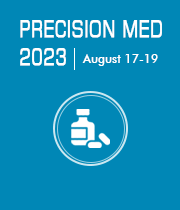Coronavirus Disease (COVID-19)- Diagnosis and treatment
Due to its rapid geographic spread over the last two decades, the coronavirus has become a global health issue. Due to the novel severe acute respiratory syndrome coronavirus 2 (SARS-CoV-2), the coronavirus disease 2019 (COVID-19) pandemic has resulted in a worldwide abrupt and significant increase in hospitalizations for pneumonia with multiorgan disease. Droplets produced during face-to-face encounters when talking, coughing, or sneezing appear to be the most common mechanism of transmission, according to epidemiologic data. COVID-19 is usually diagnosed by testing a nasopharyngeal swab with a polymerase chain reaction. Given the risk of false-negative test results, clinical, laboratory, and imaging evidence may be used to make a presumptive diagnosis in patients with a high index of clinical suspicion of infection. Quarantine appears to be the only intervention that appears to be helpful in lowering the contagion rate, despite the fact that various medicines have been recommended. To find the most appropriate evidence-based therapy modality, especially designed randomised clinical trials are required.
- Pathogen Genomics
- Biological Variables
- Genetic Variables
- Environmental Variables
- Public Health Surveillance
- Vaccine Efficacy
- Laboratory Evaluation and Confirmation
- Clinical Presentation and Diagnosis

Bernd Blobel
University of Regensburg, Germany
Roy Gary Beran
University of New South Wales, Australia
Matthias Schwab
University of Tubingen, Germany
Thomas Webster
Interstellar Therapeutics, United States
Boris Tankhilevich
Magtera, Inc., United States
Isabella Friis Jorgensen
University of Copenhagen, Denmark


Title : The use of anti seizure medication therapeutic blood level determination to personalise the treatment of epileptic seizures especially in patients attending the accident and emergency department
Roy Gary Beran, University of New South Wales, Australia
Title : Personalized and precision medicine (PPM) can be established as a unique healthcare model through biodesign-driven and inspired biotech, translational applications. This approach aims to ensure human healthcare, wellness, and biosafety.
Sergey Suchkov, Institute for Biotech & Global Health of RosBioTech and A.I. Evdokimov MGMSU, Russian Federation
Title : Monitoring folds localization in ultra-thin transition metal dichalcogenides using optical harmonic generation
Ahmed Raza Khan, Australian National University, Australia
Title : A systematic review of regulatory approaches for Direct- To- Consumers (DTC) genetic testing
Kavitha Palaniappan, Duke-NUS Medical School, Singapore
Title : Regulatory framework of in vitro diagnostic and artificial intelligence for precision medicine
Pei Ting Sarah Chou, Regulatory Affairs Professionals Society, Taiwan
Title : Unraveling cancer stem cell signatures in circulating tumor cells of metastatic colorectal cancer: Investigating ALDH1A1 and the repurposing potential of disulfiram via scRNA-seq
Nurul Syakima Ab Mutalib, Universiti Kebangsaan Malaysia, Malaysia